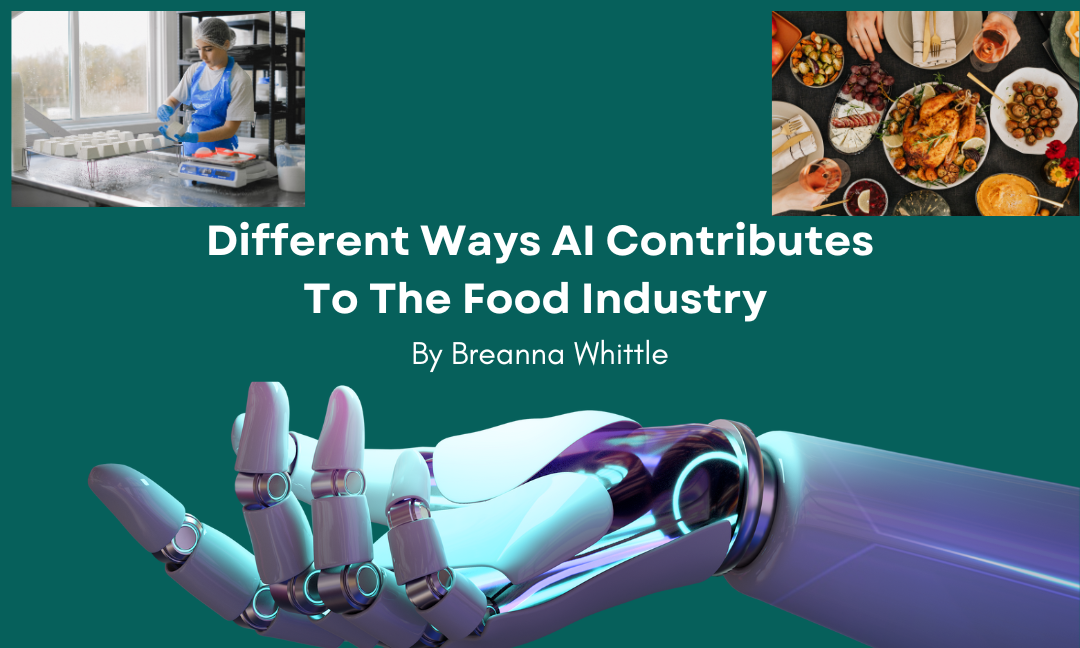Written by: Breanna Whittle
Edited by: Koneenika Datta
Designed by: Melanie Hem
Published by: Kiritika Rana

These days, we can clearly see how artificial intelligence (AI) is showing up with increased frequency in our daily lives. Recently, for instance, the voices of many musicians, celebrities, or even cartoon characters have been recorded by AI and can be used to say or sing anything we can type! Want a virtual assistant? You can ask Siri or Alexa to help you out. Even that photo up there is AI generated! It’s a technological invention that’s been applied to produce lots of awesome things in all facets of our lives, including our meals! I know it sounds crazy, but artificial intelligence is present in a wide range of food-related fields, such as food safety and food nutrition. In this article, I will list two interesting ways AI has been used in the food industry.
Firstly, how AI connects to food safety. Maintaining cleanliness is crucial when working in a commercial kitchen, such as one for a restaurant or a bakery. A company in Japan called “Fujitsu” created an AI model that monitors hand washing habits in order to enforce the six-step hand cleaning process with a 95% accuracy rate. The model builds on its existing behavioural analytics capabilities to recognise human movements and monitor the hand washing patterns. When it comes to cleaning machinery, an AI process known as Clean-in-place (CIP) is used to clean machinery while using less water. To do this, ultrasonic and UV sensors are used to offer feedback that can lead to a reduction in water waste.
Next, how AI connects to food nutrition. People are always looking for the healthiest and most nutrient-dense foods. Hoow Foods developed a platform that uses a database of food components and their physical-chemical characteristics to find recipes for sustainable and flavourful products that are nutritious. Existing products may be analysed, dissected, and modified using AI and their modular product development platform to maintain flavour but modify nutritional profile. In other words, their platform promotes the development of healthier versions of popular (unhealthy or non-nutritious) foods.
The relationship between artificial intelligence and food and the food industry intrigues me personally. It can be used to keep things clean by keeping an eye on hand washing and water usage to save water waste, or even to locate foods that are high in nutrients and sustain nutritional qualities without sacrificing flavour. This technological innovation can undoubtedly be used for a variety of purposes across an array of industries.
Work Cited
https://hivelife.com/artificial-intelligence-food/
https://www.analyticssteps.com/blogs/10-applications-ai-food-industry
https://www.azorobotics.com/Article.aspx?ArticleID=507

